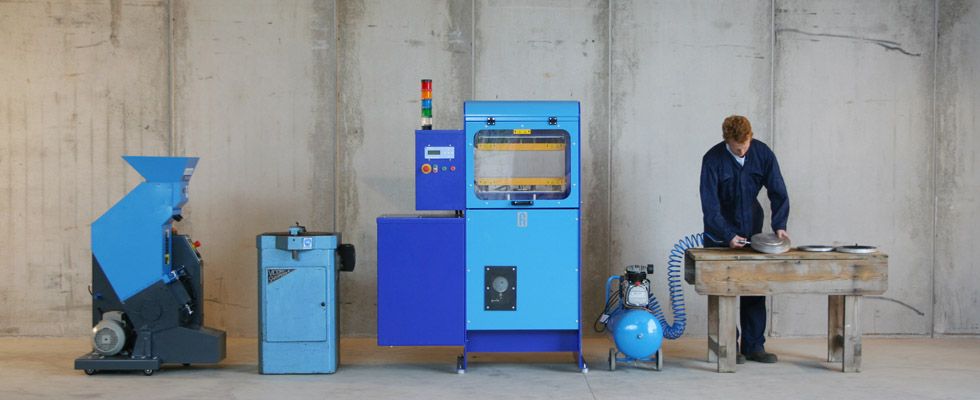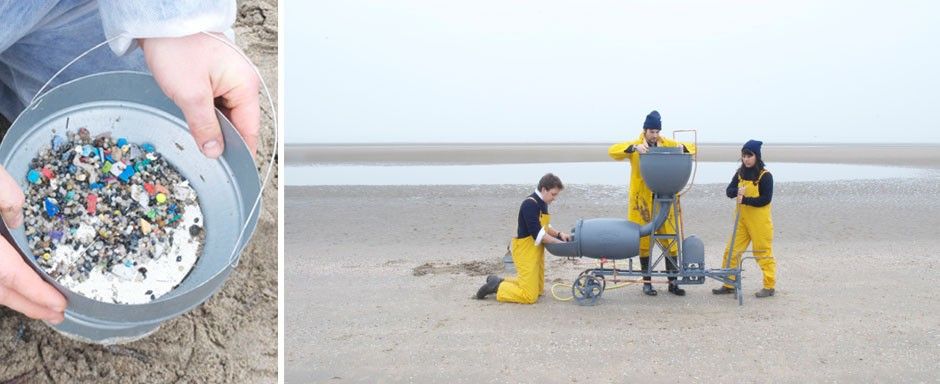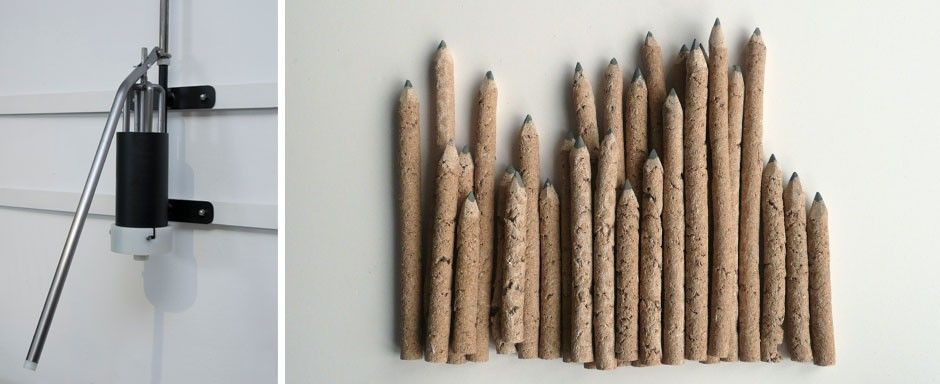Scavenger Design
By scavenging and foraging through cities, land and sea, a group of new designers are doing their bit to rid the world of waste – and make new products in the process.

If you’re going to make something, you’ll probably need some materials. For most designers, it’s a case of sourcing from a bona fide supplier. Need some wood? Head to the lumber yard. Insane amounts of stone? Go straight for a quarry. But materials aren’t cheap, especially in this age of austerity.
It makes sense then, that a better way of sourcing raw materials might be to salvage what we already have around us. Ariane Prin, a recent design graduate from the RCA in London, did just this for her graduate project, entitled From Here For Here. She built a device that makes pencils using waste material that had been locally sourced. So locally, in fact, that it came from the college’s own skips, rubbish bins and waste units.
‘When you design,’ says Prin, ‘you have to think about the material you’re going to use. And unfortunately we’re running out of that material.’ Determined to not use new wood for the pencils, she spent days scouring the college’s buildings in search for useable alternatives. The result was a cocktail of substances from different departments of the college, including dust from the wood work shop and flour from the kitchens. Together the ingredients were mixed into a malleable clay-like pulp, small amounts of which were in turn mechanically compacted and shaped around pieces of lead, creating a set of new pencils.
It’s not just urban environments that provide a place to scavenge. London designers Alexander Groves, Kieren Jones and Azusa Murakami banded together last year for The Sea Chair project, which explores the potential for sourcing washed-up waste – specifically small-sized pellets known as ‘nurdles – from the surface of polluted seas. As part of the project, they built a hand-operated mobile device that can be used to separate out small pieces of plastic waste. The Nurdler, as it’s called, works using a hand pump that takes in the polluted sea water and a flotation tank that then separates out the different densities of materials.
But the scooping up of this plastic soup is only half the story; the designers are already proposing a larger-scale solution that involves converting an old fishing trawler into a chair factory that uses the plastic waste as a raw material. Should they win the Victorinox Time To Care award and receive full funding, coasts around Britain could soon be inhabited by many of these ingenuous beach scavengers.

When you design, you have to think about the material you’re going to use. And unfortunately we’re running out of that material. Foraging in bins and skimming sea water isn’t always the easiest way to source waste material. The answer, sometimes, lies a lot closer to home. Designers Charlie Crook and Ben Atkinson-Willes only had look in their kitchen.
‘We had a flatmate who was an avid recycler which meant no plastic ever ended up in the bin,’ says Crook. ‘Our local council didn’t collect plastic at the time, however, so we were left with an enormous pile of it in the corner of our kitchen.’ And so the pair, in need of a plastic-free kitchen, created Future Industries, and began to explore how used plastic items could be reformed into new objects.
Several plastic melting experiments and toxic fume-induced headaches later, they found success, combining a suitable process within a fully-functioning mobile device. The scavenging device – part-recycling unit and part-moulding machine – transforms old plastic into a malleable material, which can then be formed into new objects such as dinnerware. Put in some old milk cartons and out comes a small saucer. An earlier version of the machine was shown at 100% Norway and Newcastle Design Week last year, but they’ve since updated the design to be even faster and more mobile.
You’re making people aware of how things work. Normally when they go to a shop, they just see a final product, but don’t really understand where the material comes from.

On its own, building things out of waste is certainly resourceful. But there’s a deeper message in here too. When people put out their recycling for the week, they don’t always know where it ends up or what it’s used for. Future Industries, for instance, lets people see an end product almost immediately, which in turn makes the recycling process easier to understand.
‘Rather than put plastic waste in a recycling bin,’ explains Crook, ‘where it’s collected, transported, sorted, reprocessed and where you’re simply told it ends up as another product, our device lets you see the whole thing first hand. It lays bare the recycling process. Which allows individuals to see a simplified version of a process that usually occurs behind closed doors or on an industrial scale. We found it was a powerful tool to encourage more people to recycle or to recycle further.’
Prin agrees, and suggests that scavenging helps to make the process of production more transparent. ‘It’s about communication’, she says. ‘You’re making people aware of how things work. Normally when they go to a shop, they just see a final product, but don’t really understand where the material comes from.’
Currently these scavengers are a small movement of conscious-minded designers keen to find raw materials in ever more resourceful ways. But in our current economic climate, with frugal consumers rife, the message seems increasingly relevant: let’s re-use the waste that lies about us. Otherwise, says Crook, we’ll just be adding to the clutter. ‘The world is a closed loop system – there’s no such thing as throw away.’


